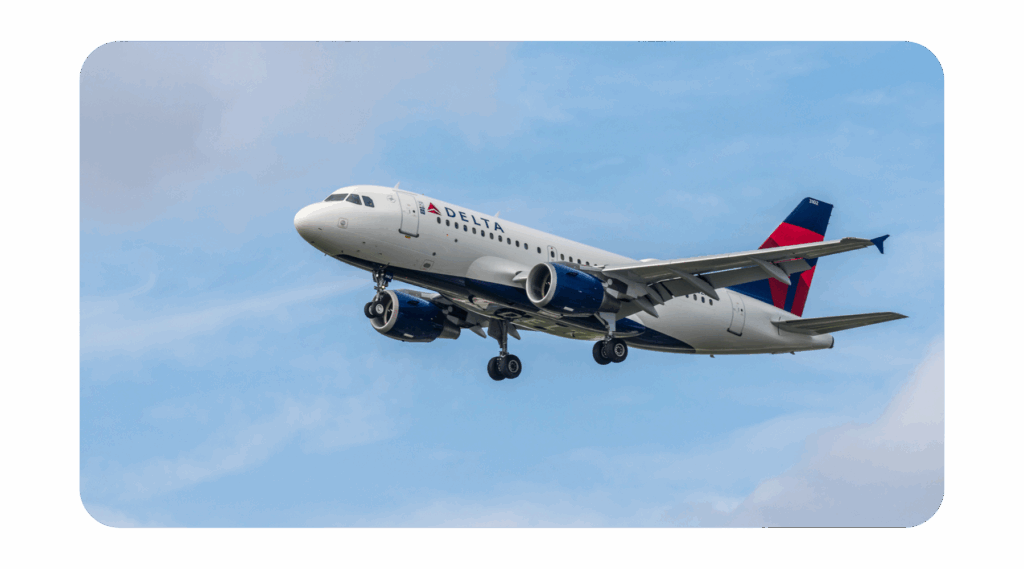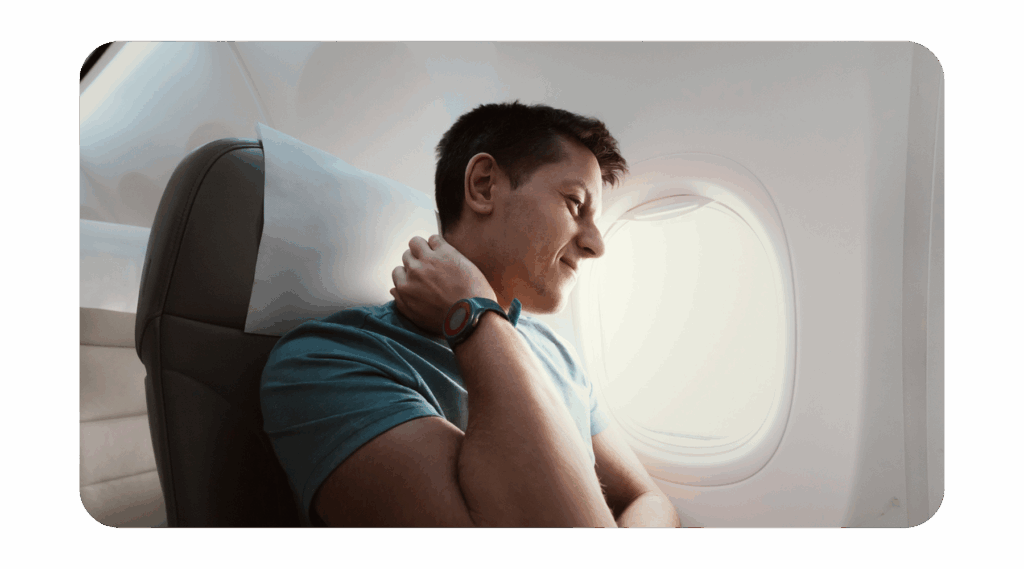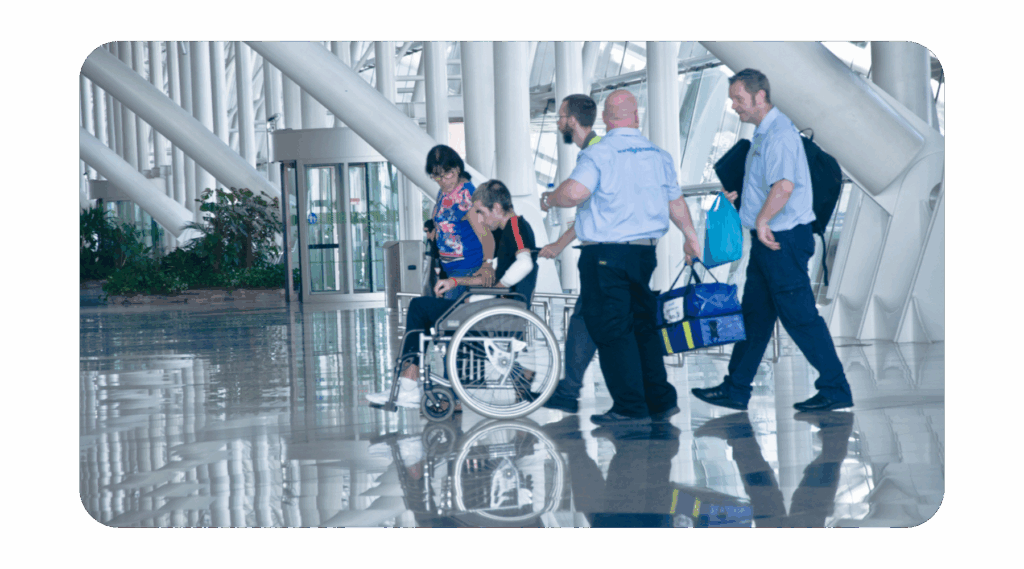Injured at the Airport or During Boarding? Here’s When Airlines May Be Liable

Airline injuries at US airports or during the boarding process happen more often than most travelers realize. Between tight flight schedules, heavy foot traffic, and hurried ground crews, the airport environment can be a minefield for mishaps. If you’ve suffered an injury in this setting, a key question naturally follows: who’s responsible?
This question isn’t always easy to answer. It could be the airline. It could be the airport. In some cases, it might be a third-party contractor. Airline liability for passenger injuries is just one piece of a much larger puzzle. To figure it out, you’ll need to understand how liability works in these situations—and why the small details often make the biggest difference.
- Who Owes You a Duty of Care?
- What Can Go Wrong—and Who Might Be Liable?
- How Boarding Accidents Happen
- What Should You Do If You’re Injured?
- Filing a Claim: Who Do You Go After?
- What Compensation Might Be Available?
- Special Cases: International Flights and the Montreal Convention
- Frequently Asked Questions
Who Owes You a Duty of Care?
Airlines and airports both have a legal obligation to protect passengers from harm—a concept known as a “duty of care.” But that duty isn’t the same across the board. Airlines are responsible for your safety throughout much of the passenger experience, especially when it involves boarding or interacting with airline personnel and equipment. Airports, on the other hand, are typically in charge of the terminal grounds, walkways, and common-use areas.
If you trip on a wet jet bridge while boarding, the airline might be responsible. But if you slip on an unmarked puddle in the food court, that could be the airport’s fault. The exact location and circumstances of your injury matter—a lot.
Here’s what courts often look for when evaluating liability:
- Was there a duty of care? Did the airline or airport have a responsibility to keep you safe in that situation?
Was that duty breached? Did they fail to take reasonable precautions? - Did that breach cause your injury? There needs to be a clear link between the failure and your harm.
- Did you suffer damages? Medical bills, lost income, or pain and suffering may all count.
These questions form the backbone of most personal injury claims, including those involving air travel.
What Can Go Wrong—and Who Might Be Liable?

Accidents tied to air travel often involve some combination of human error, equipment failure, or poor maintenance. Understanding airline liability for passenger injuries and how it intersects with airport or third-party responsibility is key. Here are a few examples of how these situations might unfold:
- Boarding bridge failure: If a jet bridge shifts unexpectedly or isn’t aligned correctly and a passenger falls, that may point to negligence by the airline or a third-party operator.
- Slippery airport floors: A spilled drink in a terminal hallway that remains uncleaned for hours could make the airport liable under premises liability rules.
- Overhead bin injuries: If unsecured luggage falls and injures someone mid-boarding or in-flight, the airline might be accountable, especially if the crew failed to check that bins were closed securely.
- Transport shuttles or carts: Injuries from airport shuttles or mobile walkways could trigger liability claims against the operator, whether that’s the airline, the airport, or a contracted company.
A study by the FAA found that falls are one of the most common causes of injury at airports, especially during boarding and deplaning. Many of these incidents stem from uneven surfaces, wet floors, or poorly maintained equipment.
How Boarding Accidents Happen
Boarding, in particular, is a critical window where many accidents occur. It’s a phase of travel that combines tight spaces, time pressure, and lots of movement. Injuries during boarding might result from:
- Defective or unstable stairways
- Malfunctioning wheelchairs or assistive equipment
- Miscommunication from gate agents or flight crew
- Crowding and poor organization at the gate
If the airline or its staff failed to prevent or correct a known safety issue, they could be on the hook for resulting injuries.
What Should You Do If You’re Injured?
If you’re hurt in an airport or while boarding, take these steps immediately:
- Get medical attention – Even if it seems minor. Some injuries, like concussions or internal strains, take hours or days to fully reveal themselves.
- Report the incident – Tell airport personnel or the airline immediately and ask for a written report.
- Document the scene – Take photos of the area and your injuries, and get the names of any witnesses.
- Save your records – Keep all medical bills, receipts, and correspondence related to the incident.
This kind of documentation can make or break a claim. Without it, you’re relying on memory and hearsay—both of which are much easier to dispute in court.
Filing a Claim: Who Do You Go After?

Determining who to file a claim against depends on who was responsible for the hazard. Sometimes it’s straightforward. Other times, multiple parties could share responsibility. For example, the airline might oversee the boarding process, but the airport may control the gate infrastructure. In those cases, a lawyer can help identify the appropriate defendant(s) and streamline the legal process.
Claims usually start by notifying the responsible party (or their insurance provider) of your intent. This often leads to settlement discussions. If no agreement is reached, you may proceed to file a lawsuit. In California, the statute of limitations for personal injury claims is typically two years, meaning you must file within that timeframe, or you could lose your right to compensation altogether.
What Compensation Might Be Available?
Compensation for airport and airline injuries can cover a wide range of losses:
- Medical expenses (emergency care, follow-up treatments, rehab)
- Lost income from missed work
- Future medical needs or long-term care
- Pain and emotional distress
- Out-of-pocket costs related to the injury
The exact amount depends on the severity of your injury and the financial impact it’s had on your life. Claims involving permanent disability or long-term pain often yield higher settlements or verdicts.
Special Cases: International Flights and the Montreal Convention
If your injury occurred while boarding an international flight, different rules may apply. The Montreal Convention, an international treaty, governs airline liability for injuries that happen during international travel. Under the treaty, airlines are liable for passenger injuries that occur on board the aircraft or during boarding or disembarkation, regardless of fault, up to a certain financial threshold.
Beyond that amount, the airline can only avoid further liability by proving they weren’t negligent. This shifts the burden of proof away from the passenger in some cases and can make international claims slightly more favorable to the injured party.
Legal Help Can Make a Difference
Airline injury claims can get complicated fast. Between international treaties, overlapping responsibilities between airport and airline staff, and the tactics used by insurance companies to minimize payouts, many people struggle to navigate the process on their own. Understanding airline liability for passenger injuries is essential to building a strong case.
Working with a personal injury attorney can level the playing field. An experienced lawyer can investigate the cause of the injury, gather supporting evidence, negotiate with insurance carriers, and—if necessary—file a lawsuit on your behalf. LMS Law has helped many injured airline passengers seek rightful compensation and can advise you on the best next steps based on your situation.
Know Your Rights Before You Fly Again
Air travel injuries can happen when you least expect them—at the gate, on the tarmac, or mid-flight. When they do, it’s important to know that legal protections exist to hold the responsible parties accountable. You may be entitled to compensation for medical bills, lost wages, and pain and suffering.
At LMS Law, we help airline injury victims understand their rights and pursue the justice they deserve. Our legal team has experience handling a wide range of aviation-related injury claims and will guide you through every step of the legal process. We offer free case reviews and can meet you at your home or hospital if needed. Call us at (415) 400–7000 or contact us online to schedule your free consultation. Don’t navigate this alone—let us help you move forward with confidence.
FAQS
When can an airline be held liable for passenger injuries?
An airline can be held liable if the injury was caused by negligence—such as unsafe conditions, crew error, or failure to follow safety protocols.
What steps should I take if I’m injured at the airport?
Report the incident immediately, seek medical attention, document what happened, and consult a personal injury attorney as soon as possible.
Can I sue an airline for injuries sustained during boarding?
Yes, if the injury was due to the airline’s negligence—like a faulty jet bridge or lack of assistance—legal action may be an option.
The above is not meant to be legal advice, and every case is different. Feel free to reach out to us at LMS Law if you have any questions. Information contained in this content and website should not be relied on as legal advice. You should consult an attorney for advice on your specific situation.
Visiting this site or relying on information gleaned from the site does not create an attorney-client relationship. The content on this website is the property of LMS Law and may not be used without the written consent thereof.

